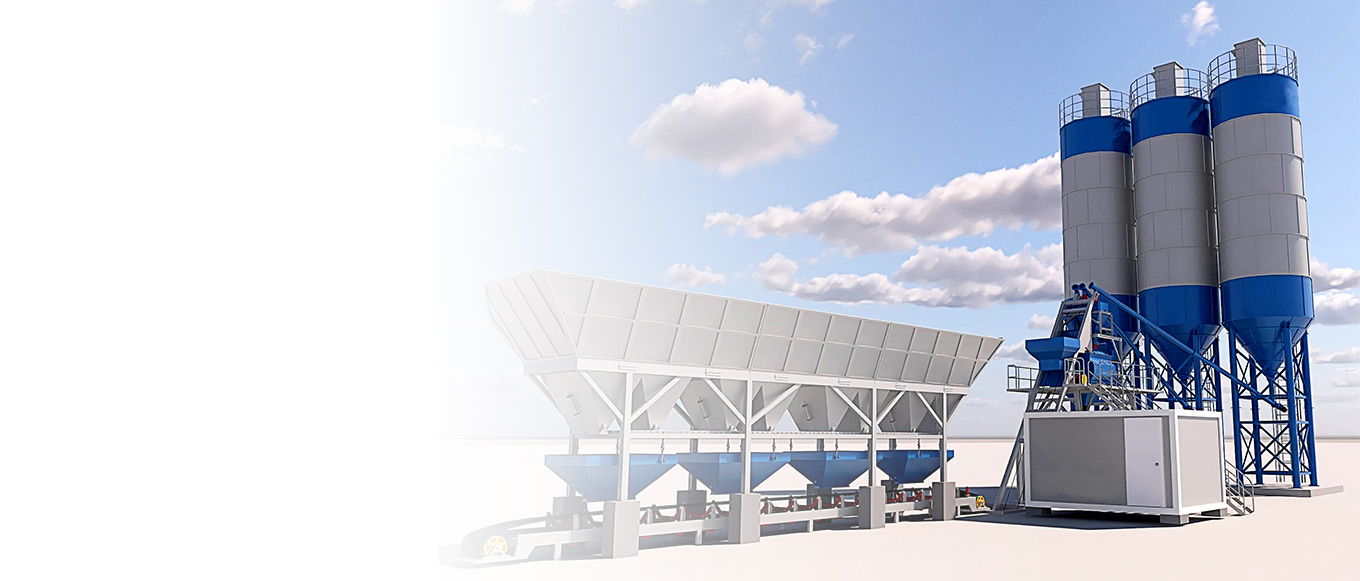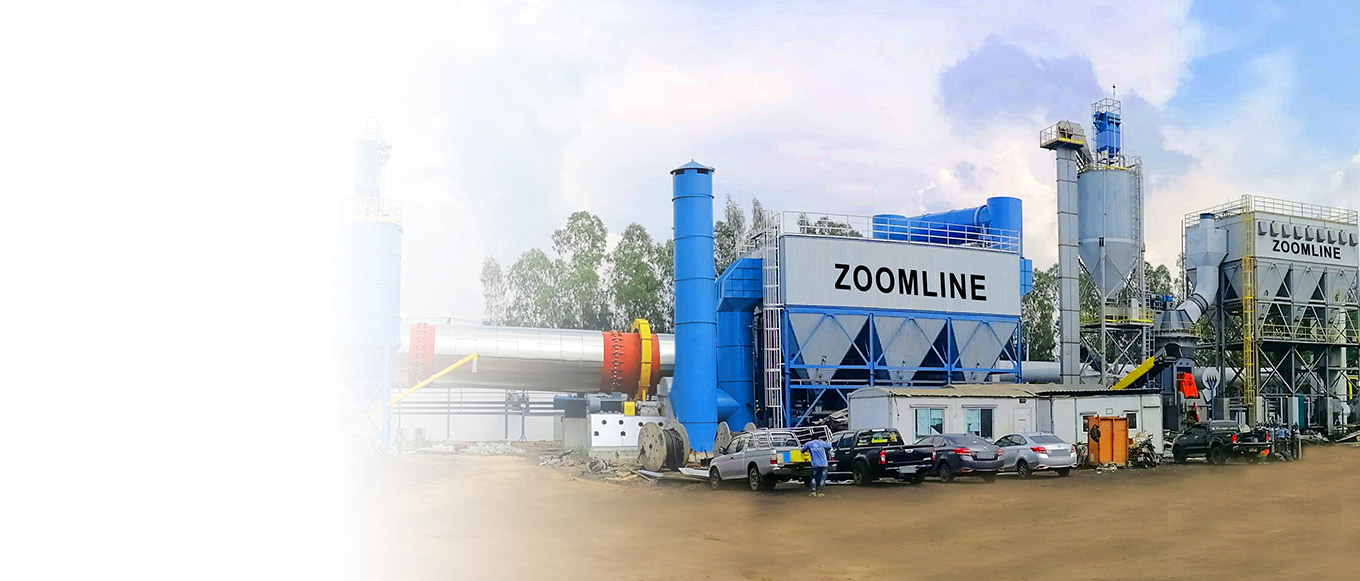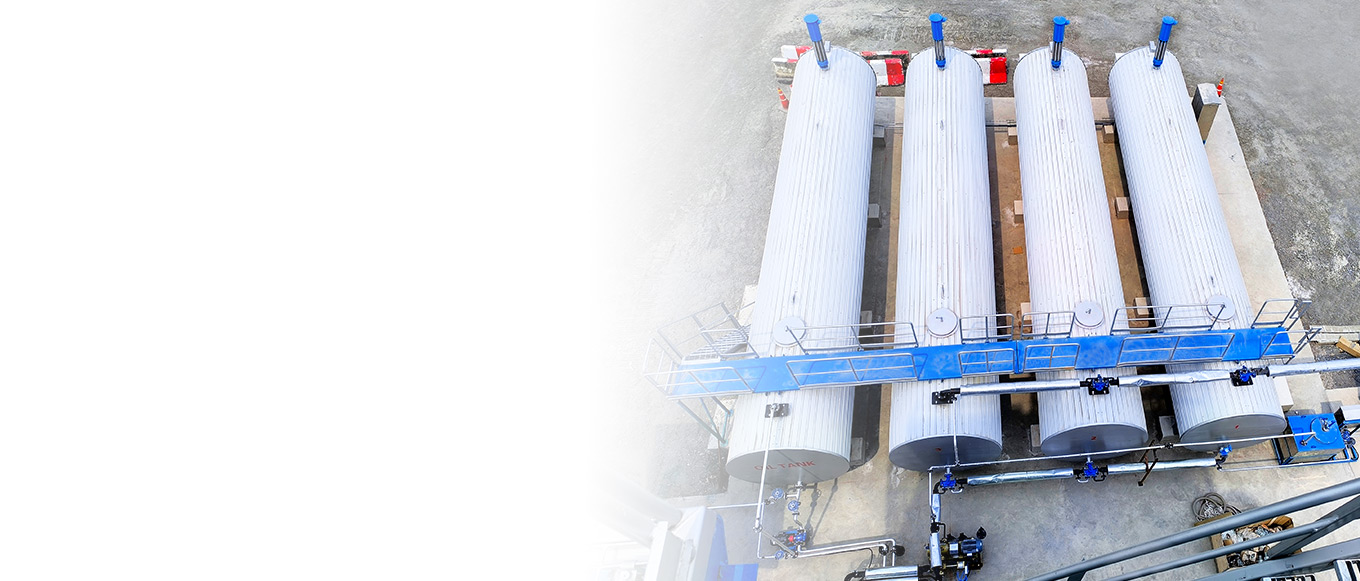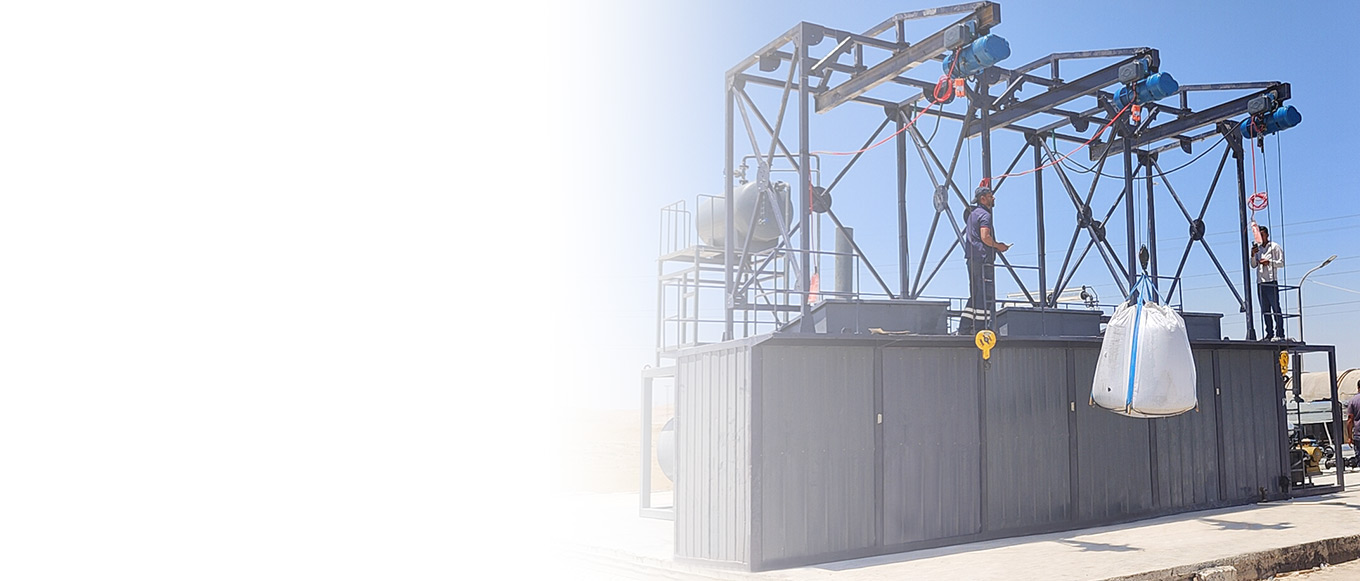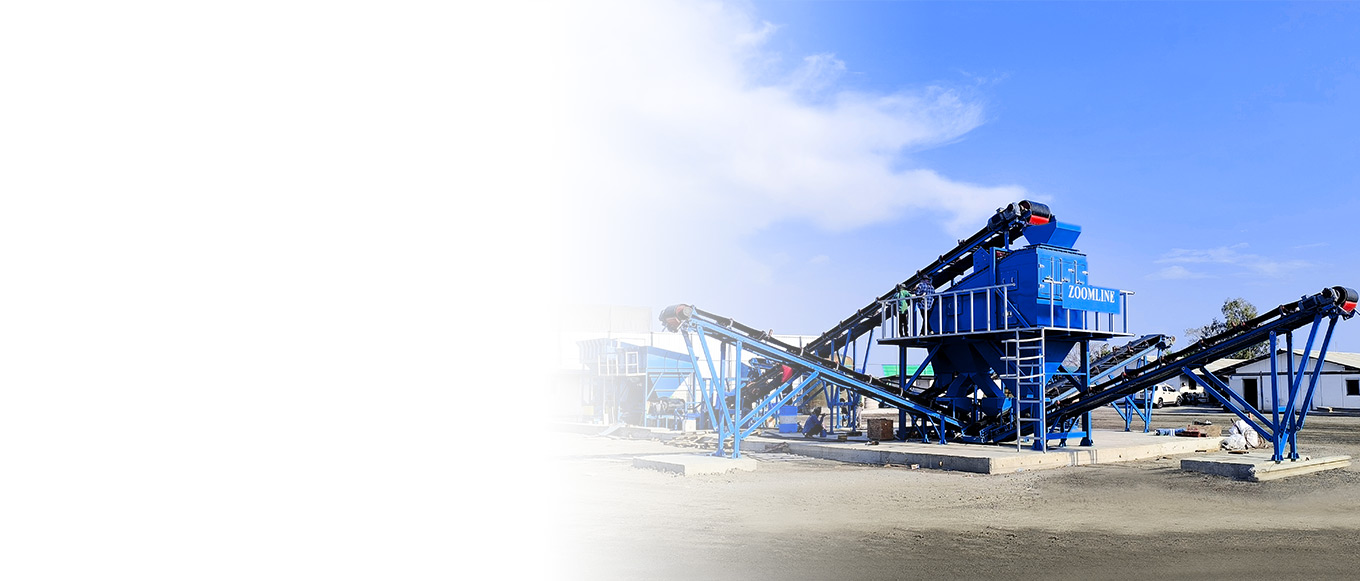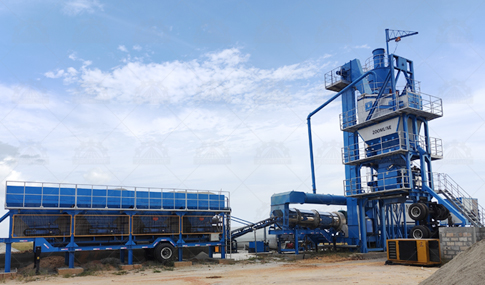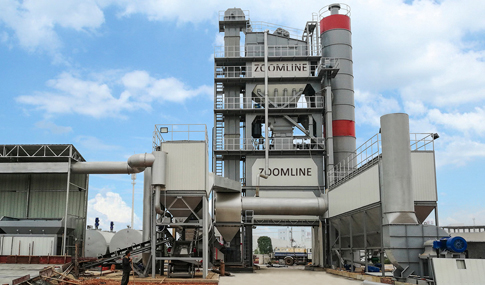In the process of modern road construction and infrastructure development, asphalt mixing plants are critical equipment, and their performance and installation quality directly impact the efficiency, cost, and final quality of road construction. This article will provide you with a detailed analysis of the core points and practical techniques for asphalt mixing plant installation, helping you successfully complete the construction process.
How To Choose The Site For Asphalt Mixing Plant
Distance from the Paving Site
The distance between the mixing plant and the paving site is the primary consideration in site selection. Excessively long distances will prolong asphalt transportation time, leading to temperature drops, reduced flow-ability, and impaired paving quality. Additionally, transportation costs will significantly increase, extending the construction schedule. Ideally, the distance between the mixing plant and the paving site should be kept within a reasonable range to ensure asphalt is laid in optimal condition.
Distance from Raw Material Sources
Being close to raw material sources can significantly reduce transportation costs and ensure timely and stable raw material supply. Whether it is sand and gravel aggregates or asphalt raw materials, shortening the transportation distance not only saves costs but also reduces the risk of production interruptions caused by transportation delays, providing strong support for the continuous and stable production of the mixing plant.
Transportation conditions
Good transportation conditions are an important guarantee for the normal operation of an asphalt mixing plant. Convenient road or water transportation channels can effectively reduce transportation time, maintain asphalt temperature during transportation, and reduce losses. When selecting a site, it is essential to thoroughly assess the surrounding road load-bearing capacity, traffic conditions, and the feasibility of waterway transportation.
Power Supply
A stable and adequate power supply is the foundation for the normal operation of mixing plant equipment. During operation, numerous devices such as mixers, conveyors, and heating systems rely on electrical power. When selecting a site, it is crucial to ensure access to a stable power grid or to have reliable backup power generation equipment to avoid production disruptions caused by power issues.
Available Land Area
Asphalt mixing plants require a large site area. On one hand, raw materials need sufficient storage space to meet production demands; on the other hand, vehicle access, equipment installation, and operation require ample space. When selecting a site, the available land area must be comprehensively evaluated to ensure it can accommodate the rational layout of all functional zones within the mixing plant.
Site natural conditions
Dry and stable site natural conditions are conducive to the long-term stable operation of the mixing plant. A humid environment may cause raw materials to become damp and deteriorate, affecting the quality of the asphalt mixture; unstable soil may affect the stability of the equipment foundation. Therefore, priority should be given to sites with higher elevation, good drainage, and stable geology.
Environmental Factors
Considering environmental protection and social responsibility, asphalt mixing plants should be located away from residential areas or densely populated regions. During operation, mixing plants generate exhaust gases and noise. If located too close to residential areas, this may lead to environmental pollution issues and resident complaints, affecting normal business operations.

Preparation Work Before Installation of Asphalt Mixing Plant
Site Planning and Infrastructure Construction
Scientific and reasonable site planning based on the planning foundation diagram is a critical step prior to installation. The location of the mixing tower should facilitate vehicle access to ensure smooth transportation of raw materials and finished products; the positions of the material yard and asphalt storage tanks should be reasonably planned to facilitate raw material storage and retrieval; the control room should be located in a position that allows observation of the entire plant’s operations without obstructing vehicle traffic; and the cold material silo should be placed in a location convenient for material loading. Additionally, foundation construction must strictly adhere to design requirements to ensure the strength and stability of the foundation, laying a solid foundation for equipment installation.
Equipment Arrival and Inspection
Ensure that all equipment arrives as per the configuration list and undergoes rigorous inspection. The model, specifications, and quantity of the equipment must align with the contract and design requirements. Inspect the equipment for any damage to its appearance and ensure all components are complete. Additionally, installation personnel must undergo professional technical briefings and training to possess the necessary installation skills and knowledge; complete the necessary approvals and registrations with local authorities; and prepare all tools, machinery, and auxiliary materials required for installation.
Wiring And Installation Requirements For Asphalt Mixing Plants
Electrical System Composition and Principles
The electrical system of an asphalt mixing plant is complex, incorporating various types of circuits such as high-voltage, low-voltage, AC, DC, digital signals, and analog signals. An industrial computer or PLC serves as the primary control unit, detecting input signals from the circuit, processing them according to predefined logical relationships, and promptly outputting control signals to drive relays, motors, and other actuators, thereby achieving automated control of all equipment within the mixing plant.
Wiring Principles and Construction Requirements
When wiring, low-voltage cables and high-voltage signal cables must be laid separately in different cable trays to prevent high-voltage interference with low-voltage signals. Cables must be routed through protective conduits to prevent mechanical damage and corrosion. All electrical equipment must be reliably grounded, with grounding resistance meeting relevant standard requirements to prevent electrical leakage and ensure safety.
Equipment Installation and Connection Points
When installing electrical equipment, ensure that the equipment is securely installed and that the terminal connections are tight. For components such as switches and relays, perform functional tests to verify normal operation. When connecting sensors, actuators, and other devices, strictly follow the wiring diagram to ensure accurate and error-free signal transmission. After installation, conduct insulation resistance tests and power-on tests on the entire electrical system to ensure safe and reliable operation.
Overall Process of Asphalt Mixing Plant Installation
Foundation Inspection and Equipment Positioning
At the start of installation, conduct a comprehensive and detailed inspection of the foundation to ensure that its dimensions, elevation, flatness, and other indicators meet design requirements. After confirmation, lift and transport the mixing plant’s equipment components to their designated positions for positioning, preparing for subsequent installation work.
Supply System Installation
Aggregate Supply System: Install the aggregate supply system, including belt conveyors, vibrating screens, and storage silos, along with dust collection systems to reduce dust pollution and ensure a safe working environment and operator health.
Stone Powder Supply System: Establish the stone powder supply system to ensure stable and uniform delivery of stone powder to the mixing equipment, maintaining the accuracy of asphalt mixture proportions.
Asphalt Supply System: Install asphalt storage tanks, heating devices, conveying pipelines, and other equipment, and equip with a thermal oil boiler to provide heat for asphalt heating, ensuring asphalt participates in mixing at the appropriate temperature.
Finished Product Storage System: Install finished product storage silos to establish a complete storage and transportation system for finished products, ensuring finished asphalt mixtures remain uncontaminated and maintain good performance during storage and transportation.
Pneumatic Circuit Installation: Install air compressors, pneumatic three-way valves, control valves, and other pneumatic equipment and components to establish a complete pneumatic circuit, providing power for the pneumatic control and actuators of the mixing plant.
Electrical circuit installation: Perform electrical system installation, including power supply lines for the control room, electrical connections for equipment, and control line installation. During installation, ensure separation of high and low voltage circuits, with low voltage cables and high voltage signal cables routed in separate cable trays to ensure stable electrical signal transmission and proper operation of all control units and electrical components.
Inspection and Commissioning
After completing all equipment installations, conduct a comprehensive inspection of the entire system to verify that all components are installed correctly, connections are secure, and electrical circuits are properly connected. Subsequently, perform equipment commissioning, including no-load and load testing of all systems, to inspect operational status, temperature control, material mixing accuracy, and other parameters, ensuring that all systems of the mixing plant operate normally and meet production requirements.

Safety Operation Tips For Asphalt Mixing Plant
Use of Personal Protective Equipment
During the construction and operation of the mixing plant, construction personnel must wear complete personal protective equipment, such as safety helmets, work uniforms, safety shoes, protective gloves, and goggles. Safety helmets prevent head injuries from falling objects, work uniforms and safety shoes protect the body from mechanical injuries and high-temperature burns, while protective gloves and goggles effectively safeguard hand and eye safety.
Equipment Operation Safety Standards
Operators must undergo professional training and obtain the corresponding operation qualification certificates before being allowed to operate the equipment. Before equipment operation, a comprehensive inspection of the equipment must be conducted to ensure that all components are securely connected, properly lubricated, and free of abnormalities. During equipment operation, operators are strictly prohibited from leaving their posts without authorization and must closely monitor the equipment’s operational status, immediately shutting down the equipment upon detecting any abnormalities. Maintenance or servicing work must not be conducted while the equipment is in operation. If maintenance or servicing is required, the equipment must first be shut down, powered off, and safety warning signs must be set up.
Emergency Measures and Contingency Plans
Sufficient fire extinguishing equipment must be provided at the mixing plant site, and regular inspections and maintenance must be conducted to ensure their functionality. A comprehensive contingency plan must be established, including emergency response procedures for accidents such as fires, electric shocks, and mechanical injuries. Regularly organize emergency drills for construction personnel to enhance their emergency response and self-rescue/mutual aid capabilities, ensuring swift and effective handling of accidents to minimize losses.
How Long Does It Take to Install an Asphalt Mixing Plant?
Estimated Duration for Each Phase
Site Preparation and Foundation Construction: Site clearance, leveling, and foundation pouring typically take 1–2 weeks, with the exact duration depending on site conditions and the complexity of foundation work.
Equipment Installation: Equipment structure assembly and system installation are relatively complex tasks, typically requiring 3–4 weeks.
Commissioning and Training: Equipment commissioning, parameter calibration, and operator training generally take approximately 1–2 weeks.
Factors Affecting Schedule and Response Strategies
Factors such as weather conditions, delayed equipment delivery, and the technical proficiency of construction personnel may all impact the installation schedule of the mixing plant. During the project planning phase, these factors should be fully considered, and sufficient schedule buffer time should be allocated. Strengthen communication and coordination with equipment suppliers to ensure timely delivery of equipment; reasonably allocate construction personnel, enhance technical training, and improve construction efficiency; monitor weather forecasts and prepare in advance for adverse weather conditions to ensure smooth installation progress.
Conclusion
The construction of an asphalt mixing plant is a systematic and complex engineering project involving multiple critical phases such as site selection, preparation, installation, and safety. Only by strictly adhering to relevant standards and specifications in each phase and paying attention to details can an efficient, stable, and safe asphalt mixing plant be constructed, providing reliable asphalt mixture supply for road construction projects and contributing to the development of high-quality road engineering.


